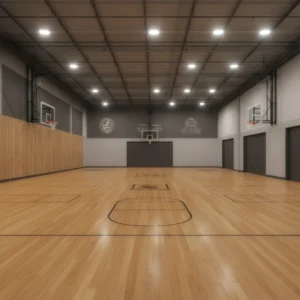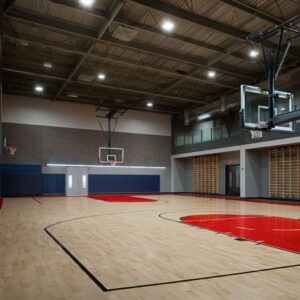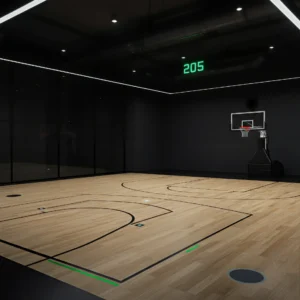Multi-purpose indoor courts have become the standard for modern sports facilities. From hosting a basketball tournament to accommodating a yoga class, these spaces must cater to diverse activities without compromising performance or safety. At the heart of these versatile arenas lies one critical decision—what type of flooring to install. Among the various options available, sports wood flooring has consistently proven to be a standout choice. This blog explores the reasons behind its popularity, its technical advantages, and why facility managers and athletes alike trust this solution.
The Evolution of Sports Flooring
The concept of sports flooring has come a long way. Historically, indoor sports relied on hard concrete or basic tiles, which were neither athlete-friendly nor adaptable for multiple functions. Over time, advancements in material science introduced rubberized surfaces, synthetic turf, and composite solutions. Yet, the demand for flooring that strikes the perfect balance between performance and adaptability led many sports facilities to adopt wood.
Wood flooring, initially used in exclusive indoor basketball courts and gymnasiums, has expanded into multi-purpose courts, offering elegance, durability, and performance above other materials. This shift reflects a growing focus on athlete safety, facility versatility, and long-term sustainability.
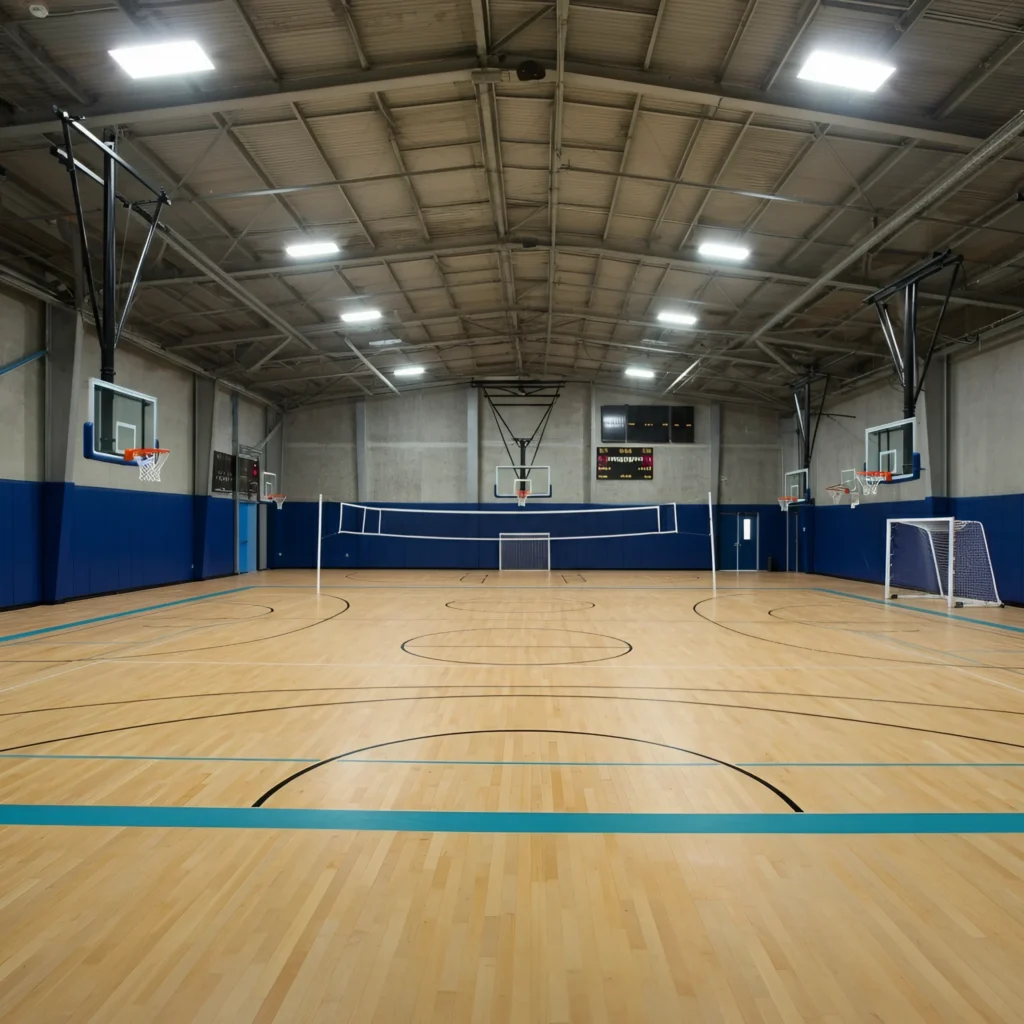
Wood Flooring in Multi-Purpose Indoor Courts
Key Benefits of Sports Wood Flooring
Wood flooring offers several advantages that make it a preferred choice for multi-purpose courts:
- Durability: Sports wood flooring is engineered to withstand heavy foot traffic and intense physical activities without suffering significant wear and tear. It can hold up against sports equipment and accidental impacts, ensuring it remains in excellent condition for years.
- Shock Absorption: A critical aspect of athletic performance and safety is the floor’s ability to absorb impact. Wood flooring provides excellent shock absorption, reducing stress on athletes’ joints and minimizing injury risks.
- Versatility for Multi-Use: Wood flooring can seamlessly accommodate various activities—from high-impact sports such as basketball and volleyball to events like dance classes or community gatherings.
- Enhanced Traction and Performance: Unlike synthetic floors, wood offers optimal grip for athletes, allowing for consistent movement and improved game performance.
Wood Flooring vs. Alternative Indoor Court Surfaces
When compared to other popular indoor flooring options, the benefits of sports wood flooring are clear:
- Versus Synthetic Flooring: While synthetic options are budget-friendly, they often lack the durability and shock-absorbing properties of wood, making them less suitable for high-performance sports.
- Versus Rubber Flooring: Rubber floors are excellent for certain recreational activities but can fall short in delivering the aesthetic and professional-grade performance that wood provides.
- Versus Vinyl Flooring: Vinyl offers affordability and easy maintenance but does not match the overall quality, longevity, and natural feel of wood.
The Sustainability Aspect
Eco-Friendly Features of Sports Wood Flooring
Sustainability is a growing concern in facility management, and sports wood flooring addresses these challenges by offering environmentally responsible solutions. Here’s how:
- Responsible Wood Sourcing: Many manufacturers use sustainably harvested wood that meets global environmental standards, such as FSC (Forest Stewardship Council) certification.
- Efficient Installation Practices: Some modern wood flooring systems are designed for rapid installation, reducing waste and manpower for the installation process.
- Lifespan and Recyclability: With proper maintenance, wood floors can last decades. When replacement is required, the material is biodegradable and eco-friendly.
- Low VOC Finishes: Wood floors are often finished with low-volatile organic compound (VOC) products to ensure improved air quality indoors.
By choosing sustainably produced wood flooring, facility managers contribute to environmentally conscious practices while benefiting from the long-term durability of the material.
Considerations for Choosing Wood Flooring for Multi-Purpose Courts
When selecting wood flooring for a sports facility, several factors should be evaluated:
- Budget: While wood flooring may have a higher upfront cost, its longevity and low maintenance make it a cost-effective choice in the long run.
- Maintenance Requirements: Regular cleaning and refinishing are necessary to preserve wood flooring, though modern finishes reduce the frequency of maintenance.
- Environmental Compliance: Look for certifications such as FSC or E1 for proof of sustainable and low-emission products.
- Performance Standards: Assess requirements like shock absorption, ball bounce, and traction based on the activities your facility hosts.
- Design & Aesthetics: Wood flooring offers a classic and elegant appearance, with customizable lines and finishes to match your unique style and requirements.
Future Trends and Innovations in Sports Wood Flooring
The sports flooring industry is seeing exciting innovations aimed at improving functionality, sustainability, and athlete safety. Here’s what’s on the horizon:
- Advanced Biomechanical Designs: Biomass sports flooring systems are being developed to enhance responsiveness and reduce fatigue for athletes.
- Smart Technology Integration: Manufacturers are starting to introduce sensors embedded in wood floors to track athlete performance and monitor wear and maintenance needs.
- Customizable Finishes: Advances in staining and coating allow facility managers to create aesthetic wood flooring designs that reflect team branding or venue themes.
- Enhanced Sustainability: Continued innovation in wood sourcing and finishing ensures even lower environmental impact and a push toward carbon-neutral production practices.
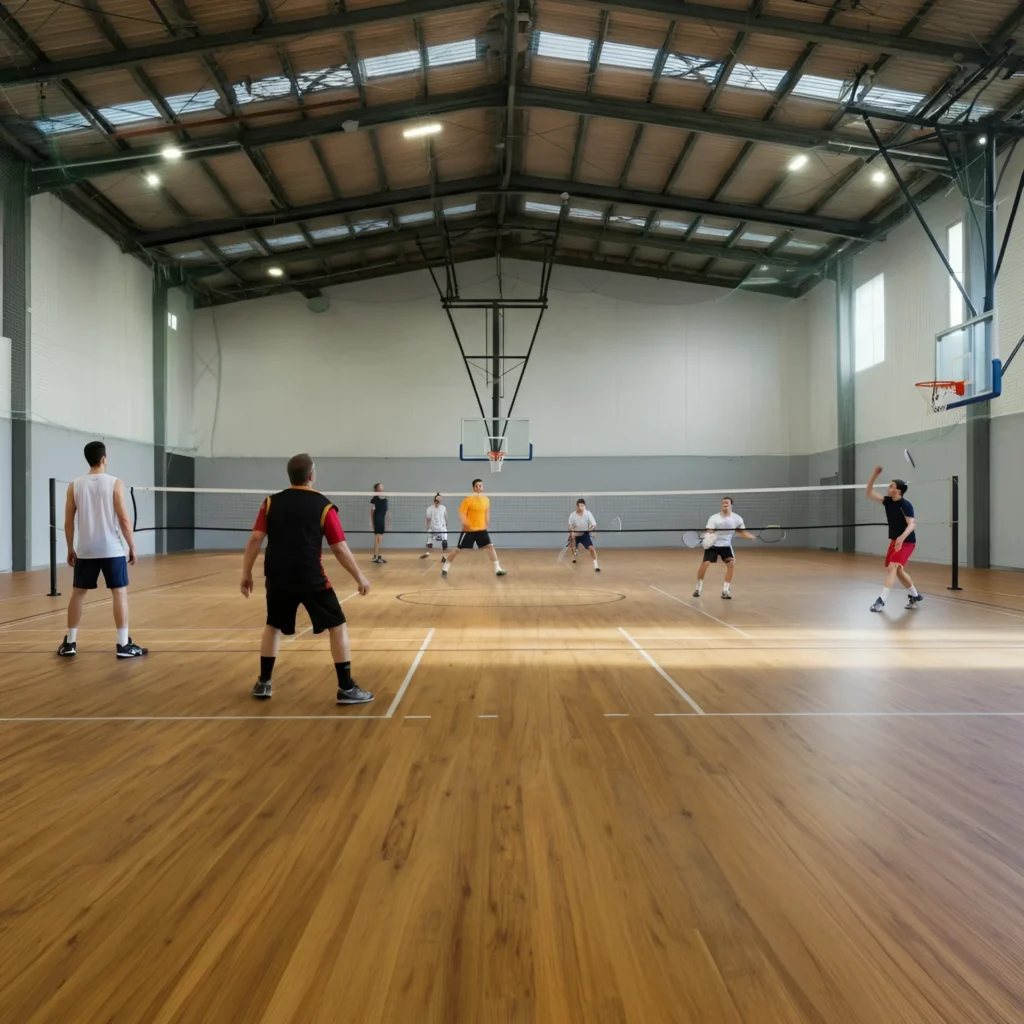
Frequently Asked Questions About Sports Wood Flooring
Q1. How long does sports wood flooring last?
With proper care and maintenance, sports wood flooring can last 25 years or more, making it a long-term investment for sports facilities.
Q2. Is wood flooring suitable for high-impact sports?
Yes, high-quality wood flooring is engineered to withstand high-impact sports and offers superior shock absorption to protect athletes.
Q3. How do I maintain wood sports flooring?
Regular sweeping, mopping with non-abrasive cleaners, and periodic refinishing are key to maintaining wood floors.
Q4. Is wood flooring eco-friendly?
Many wood floors are made from sustainably harvested wood and use low-VOC finishes, making them an environmentally responsible choice.
Q5. Are wood floors safe for multi-purpose courts?
Absolutely. Wood flooring meets safety standards for traction, shock absorption, and durability, ensuring they’re ideal for a range of activities.
Sports Wood Flooring: Elevate Your Multi-Purpose Court
By choosing sports wood flooring, facility managers can create indoor courts that are versatile, durable, and eco-friendly. With its unmatched performance, classic appeal, and long-term benefits, wood flooring remains the gold standard for multi-purpose courts.
Consider upgrading your facility with this superior flooring option. If you’d like tailored advice, competitive quotes, or detailed product information, contact COPOSPORTS today. Don’t just settle for functionality—opt for excellence.




